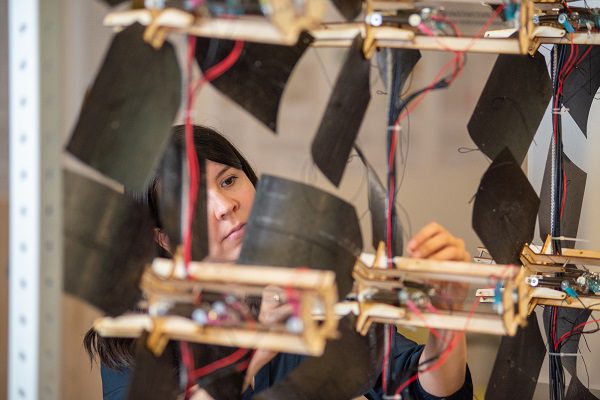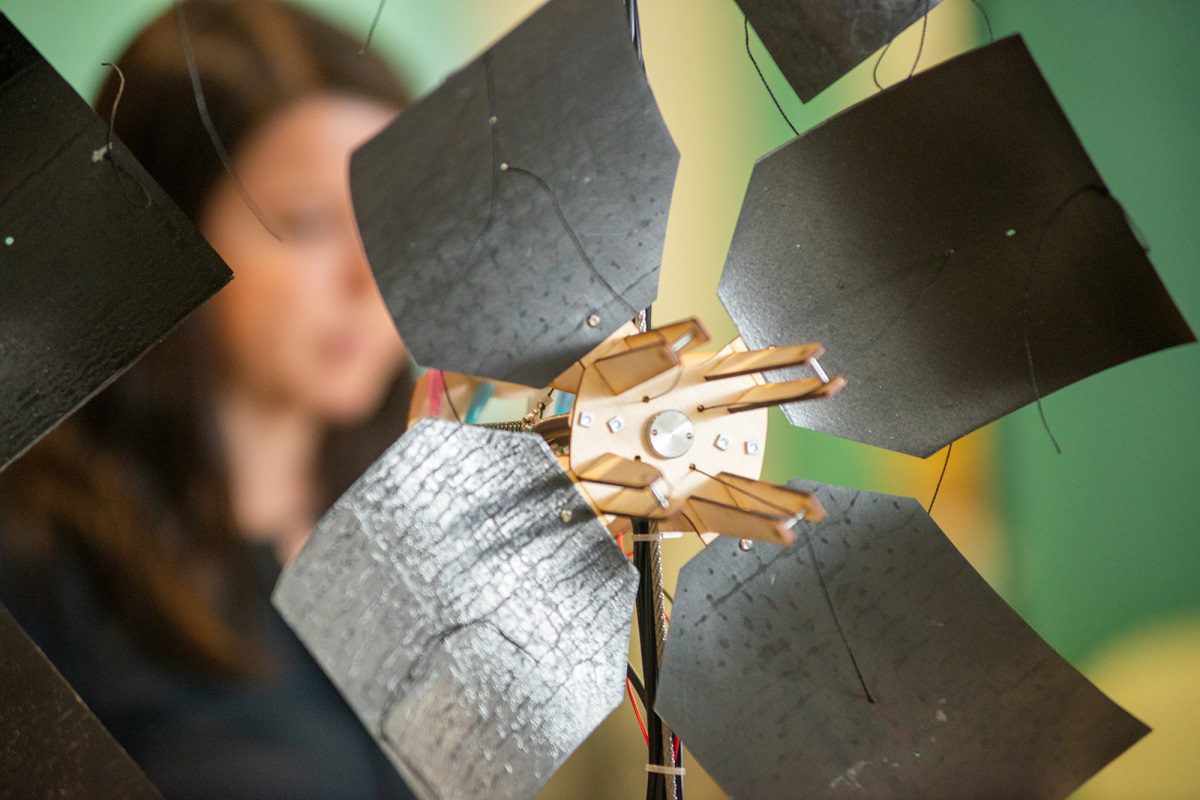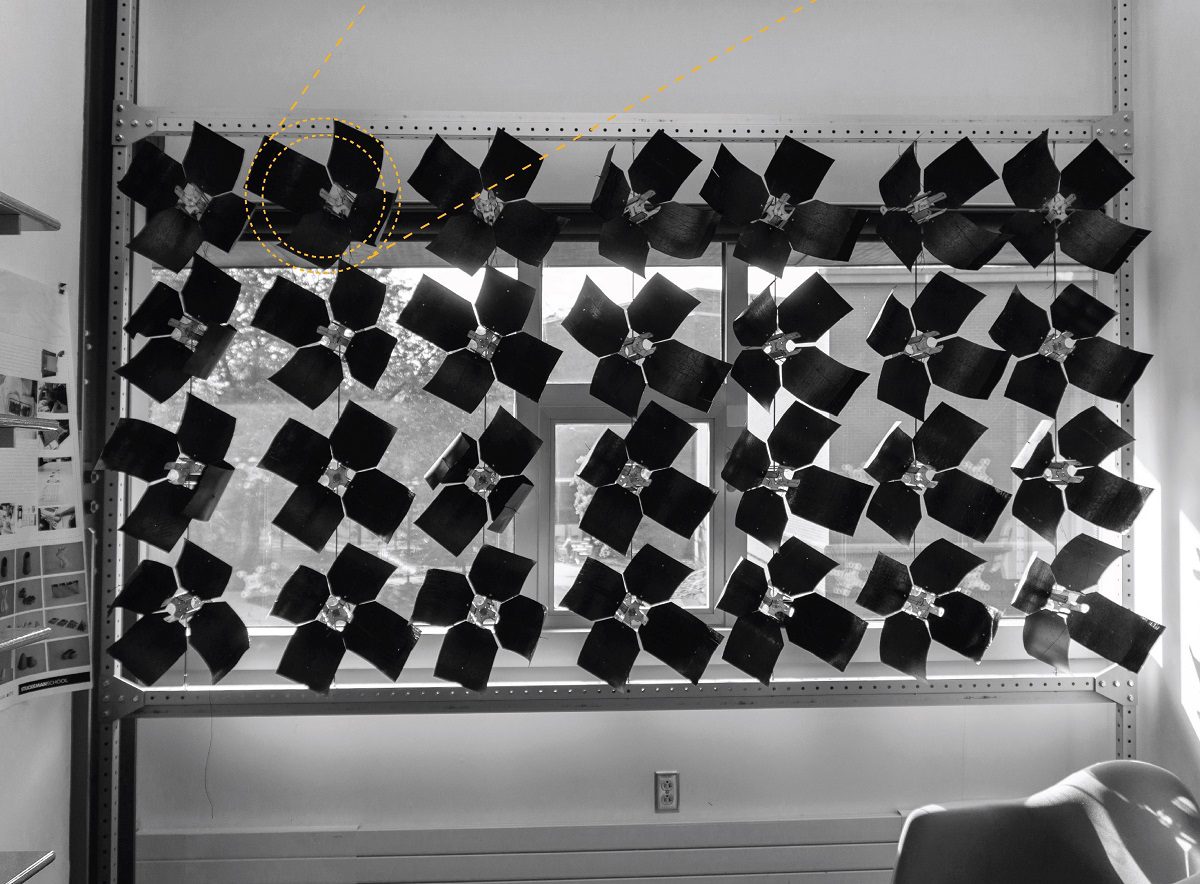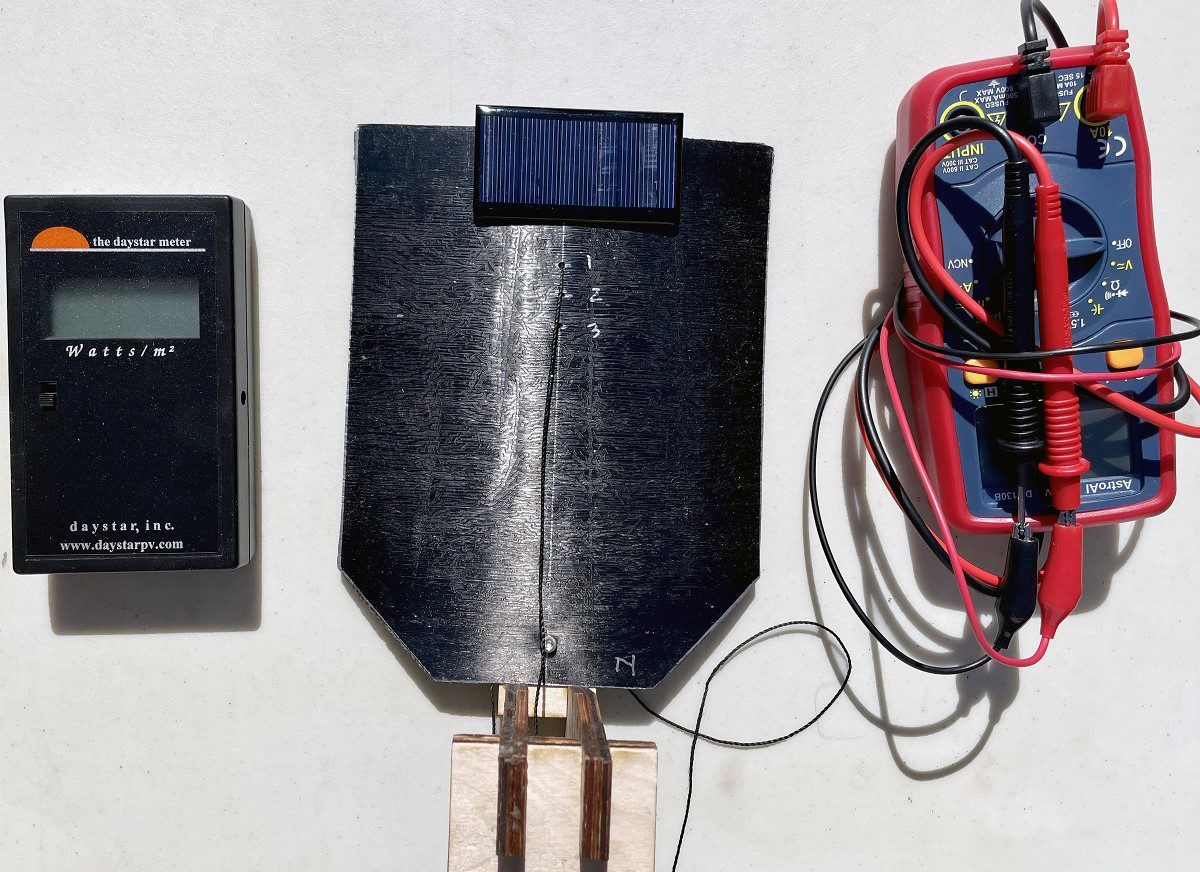Research Fellow Wins 2023 ARCC Dissertation Award

Elena Vazquez Pena, a research fellow in technology and design in the David R. Ravin School of Architecture, has received the 2023 Architectural Research Centers Consortium (ARCC) Dissertation Award. Founded in 1976, the ARCC is an international association of architectural research centers, academies and organizations committed to the research culture and supporting infrastructure of architecture and related design disciplines. The award, presented with the Association for Architectural Education, recognizes one dissertation each year.
Vazquez came to UNC Charlotte in August from Penn State University, where she completed a Ph.D. in Architecture (Design Computing), a Master of Science in Architecture, and a graduate certificate in Additive Manufacturing. Her dissertation, Kinetic Architecture: A Performance-Based Approach for Developing a Shape-Changing Skin Using Bistable and Smart Materials, explores the use of a novel building material to create screens that open and close in response to daylight and darkness.
As a master’s student at Penn State, Vazquez studied static brick façade systems, and her thesis, Perforated Masonry Walls: Creating a digital framework for optimizing environmental performance through shape configuration, received a “Distinguished Master’s Thesis Award” from the university in 2018. But she subsequently became interested in systems that could change in response to outside conditions. Sunflowers, for example, turn to face the sun; what might architecture learn from nature, and how might that lead to more efficient buildings?
In 2019, Vazquez read about bistable materials in a material sciences journal. Prompted by various stimuli, bistable materials transition easily between two states of equilibrium. Recall the popular slap bracelets: with a simple “thwack,” the flat, rigid strip curves around the wrist to form a new shape, holding that circular position until it is pulled straight again. Vazquez was intrigued by the possibilities of introducing this type of material to building design, creating kinetic structures.

“This material wasn’t being used in architectural applications,” she said. “I thought it was a good idea.”
For her dissertation research, Vazquez developed a kinetic screen made of bistable flaps, designed for the interior of a window, much like window blinds. The kinetic screen served as a case study “(1) to determine how to design with bistable materials, (2) to identify adequate configurations for bistable screens and their actuation mechanism, and (3) to assess their daylight performance,” Vazquez wrote in her dissertation abstract. The research has been published in articles in the Journal of Facade Design and Engineering, Smart Materials and Structures, and in the SPIE Conference Proceedings, Behavior and Mechanics of Multifunctional Materials XVI.

Results demonstrated that the bistable screen was able to help improve daylight conditions. The next stage of her research, Vazquez said, is to integrate small solar panels into the screen flaps so that the structure not only blocks excessive sunlight but also generates electricity. That research is happening at UNC Charlotte, within the Integrated Design Research Lab (IDRL).
Vazquez is in the second semester of a two-year, full time research and teaching position. She was attracted to the School of Architecture in part because of the work that Professor of Architecture Kyoung Hee Kim has done in façade technology. In addition to her microalgae window system research, Kim is investigating regenerative windows integrated with climate responsive solar cells.
“I was familiar with her work, and that was a factor in my coming here,” said Vazquez.
For now, the challenge is to develop a kinetic screen system that can both produce energy and provide daylight control, Vazquez said. The optimal flap position for one activity might not be best for the other.
“When you consider something kinetic, it’s a little harder to harvest energy than from, say, a wall that is static.”

Images from top to bottom: Elena Vazquez Pena with her kinetic screen, photos (2) by Michelle Bixby, Penn State University. The kinetic bistable screen prototype for an office window and a close-up of a screen flap with PV panel, photos by Elena Vazquez.